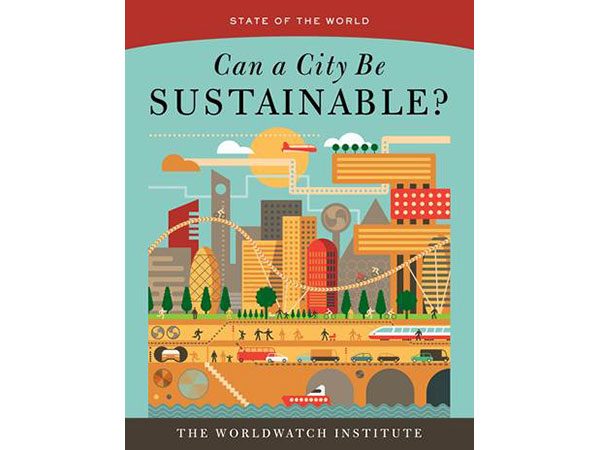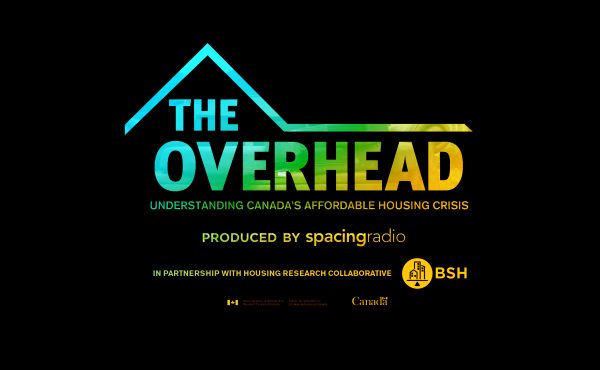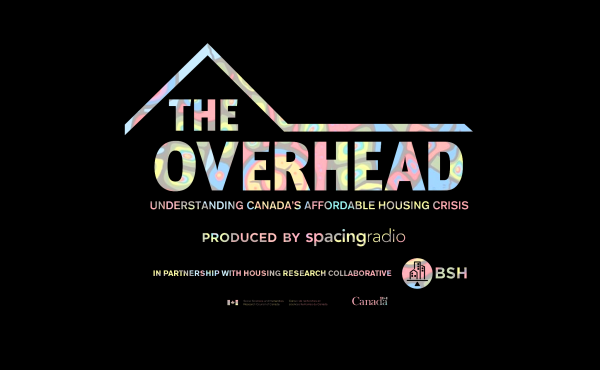
Author: Worldwatch Institute (Island Press, 2016)
Every year since I started writing for Spacing, I have found myself anxiously awaiting the next State of the World book from the Worldwatch Institute. The books encapsulate vast amounts of data from all around the world, synthesized by several authors into essays that talk about where we are at, on a variety of fronts. This, in the past, focused on our societies as a whole—our health and welfare, our economies, crime, housing, infrastructure, the list goes on.
This year’s book, however, came with a question that set up the theme throughout: “Can a City Be Sustainable?” The answer is not clear, and the book makes no allusions to the fact that it has all the answers. What is embraced throughout the pages, however, is our future: not a doom and gloom snapshot of terrible things to come, but a positive look toward what we, as a species, can accomplish if we work at it. This is captured in the very first sentence: “This book is about hope.” Hope can be a wonderful thing when wielded properly, and while the answers and questions raised may not give us definitive proof that we are on the right path with our ecological future, we have much to be hopeful about.
State of the World is broken up into parts, consisting of two forewords by the editors, a short essay titled World Cities at a Glance, and then sections that further delineate the books content. These sections help focus the reader’s attention by not keeping the subject matter broad and overwhelming, which can happen easily when we are talking about climate change or our sustainable future.
Sections such as Cities as Human Constructs focuses on how cities have played a major factor in human life throughout our history, while The Urban Climate Challenge looks at how we are working within our cities to combat climate issues including items caused by cities and buildings themselves. Finally, Politics, Equity, And Livability highlights the social aspects of how cities are driving sustainable change.
Within each section, the reader is given a “City View” case study of a city from around the world, which helps to reaffirm the arguments made within the essays by giving them a legitimate placeholder in our world. Case studies are a magnificent way to make information real and seem to be gaining popularity as authors, editors, and publishers try to get their message across to a more diverse audience than perhaps they would have previously.
Pertaining specifically to Vancouver, there is an essay titled Is 100 Percent Renewable Energy in Cities Possible? and the “City View” case study is written by Mayor of Vancouver, Gregor Robertson around its Greenest City 2020 Action Plan—an initiative aimed at having “all buildings constructed from 2020 onward…be carbon-neutral in operations, and having 51 percent of trips taken by bike, walking, or transit.”
Within the essay that prefaces this case study, the conclusion is that 100 percent renewable cities are completely possible, and, by showing Vancouver as a city trying to achieve those goals through a detailed breakdown of the action plan, not only have we read how other cities have done it but can ascertain the political and social makeup of how such an idea starts, and what it needs to grow and flourish.
This one-two punch runs throughout the book and takes the articles from the academic to real-life scenarios the reader can see happening around the world. In doing so, Can a City Be Sustainable? brings exciting ideas to our attention in an accessible way.
One of the biggest issues with climate change and our energy use is that there aren’t enough of us who fully understand the intricacies of what we can do to change things. Issues are seen as monumental; insurmountable by individuals and only beatable by large entities. What these essays do is humanize the cases so that people can understand that giants are not solving these issues. Normal, everyday people. Local municipal politicians. Grassroots activists. These are the type of people driving change. State of the World: Can a City Be Sustainable? does exactly what it sets out to in its first sentence: give us hope. Hope that, with the right moves, can drive change that will ripple across the globe.
***
For more information on State of the World: Can a City Be Sustainable?, visit the Island Press website.
**
Jeremy Senko is happily lost in the world of theoretical architecture and design. He is forever a student at heart, consistently reading, experiencing and learning about the world he inhabits. More specifically, he works as an Interior Designer in Vancouver and plays an active part in bettering the environments we live in.




